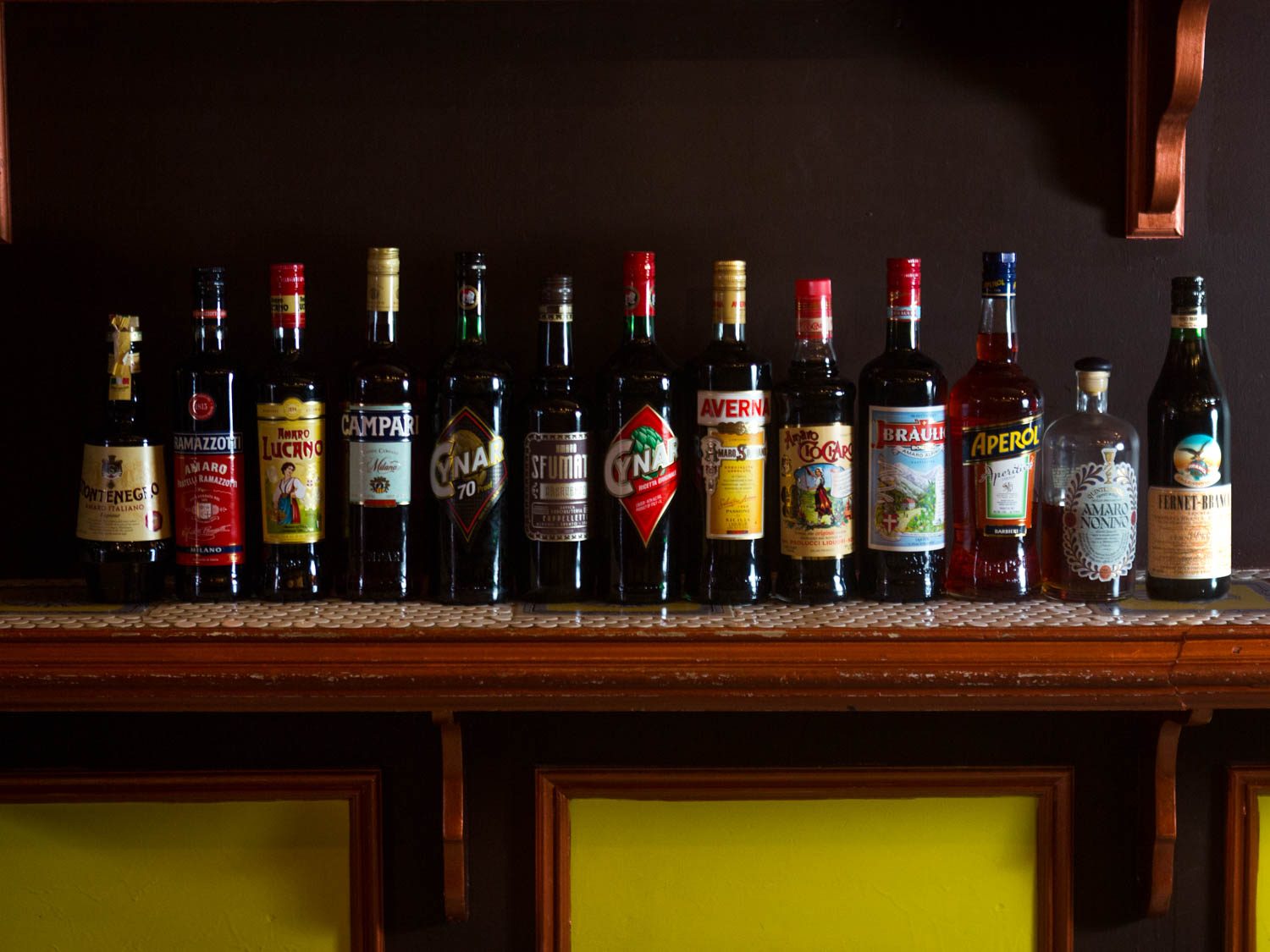
An array of amari at New York’s Amor y Amargo [Photographs: Vicky Wasik]
The most exciting thing about amari can often also be the most frustrating—the style’s incredible range and diversity makes it nearly impossible to define. Though the word amaro translates literally to “bitter,” the term is applied loosely to the entire family of bittersweet Italian liqueurs, and, more recently, any bittersweet, herbal liqueur. Once left to gather dust on the bottom shelf, these days the incredibly complex liqueurs are getting their long-overdue time in the spotlight.
At the most basic level, an amaro is made by resting some combination of macerated flowers, herbs, roots, and other natural bittering agents in a neutral spirit to yield a high-proof infusion, which is then sweetened to taste. (There’s an entire book that will teach you how to make your own.) But what best defines the amaro family as a whole isn’t any particular set of ingredients, which can range from wormwood and gentian bark to cardamom and mint. Rather, it’s the centuries’ worth of traditional drinking culture steeped in every bottle.
“There’s a romantic quality to amaro,” says Sother Teague, an erstwhile chef heading up the beverage program at the bitters-centric New York cocktail bar Amor y Amargo. “They not only stimulate your appetite, they stimulate conversation and mental activity. It’s about what’s happening outside of the glass as much as in the glass.”
For the purposes of this beginner’s guide, we’ll stick with time-honored varieties from Italy, though similar products—both new and old—are made in France, Germany, and even the US. It was the Italians who invented the art of the amaro, and have been imbibing the stuff since the 1800s, originally for medicinal reasons, and, in modern times, as pre-meal aperitifs and post-meal digestifs.
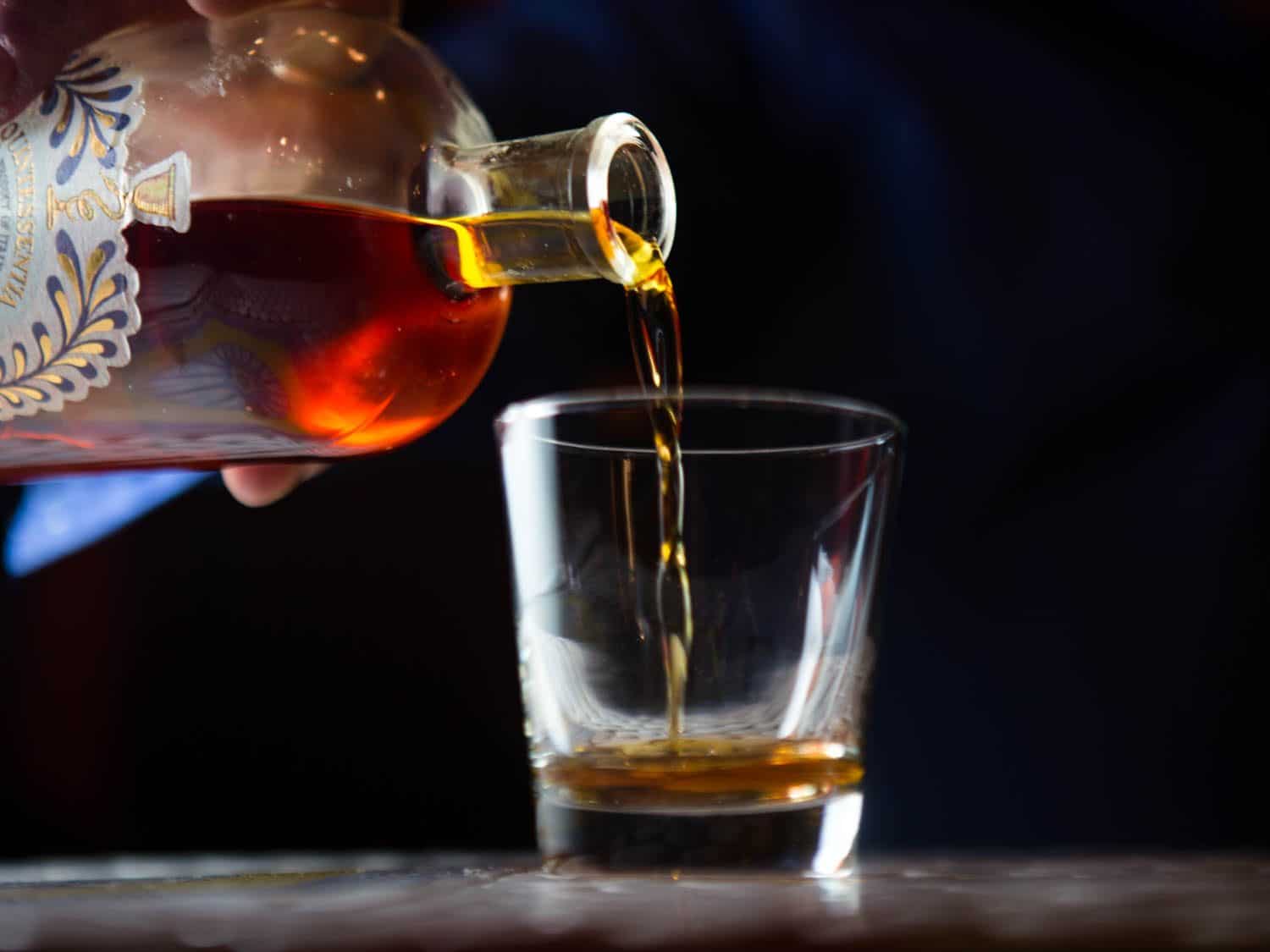
As Teague explains, the aperitif hour, which typically takes place a little earlier than the American happy hour, is a drinking experience that involves a completely different mentality from the “get-drunk, bang-for-your-buck version” of the States. Even when served straight, as is commonplace in Italy, amari are poured conservatively and sipped leisurely. And effervescent, amaro-based cocktails—often served with olives, toasts, or other tapas-like nibbles—are typically low in ABV, featuring combinations of amari and club soda or sparkling wine. Teague suggests that aperitifs help trigger your appetite while digestifs speed up the digestive process.
So how do you choose, and use, an amaro? As with the production of amari, there are no rules about where to start. Some of you reading might already be familiar with the likes of popular bottlings like Aperol, of spritz fame; Campari, one pillar of the Negroni; and even Montenegro, a mellow sipper that Teague considers to be his gateway amaro, along with Nonino. Others, like Sfumato, may be tough to find and even tougher to acquire a taste for, with in-your-face bitterness and overwhelming aromatics. But regardless of which bottle you start with, Teague recommends drinking it by itself. “Every amaro is an entire cocktail on its own,” says the barman. “Take Montenegro: It’s made from 40 herbs and spices. That’s a 40-ingredient cocktail. You should get to know these flavors on their own, with just an ice cube or soda, before you start trying to mix with them.”
Ready to get started? From bright-red and citrusy to dark and herbal, here are 12 excellent bottles of amaro to grab off the bottom shelf today (and dozens of recipes to make them most of them once you’re well acquainted).
Averna
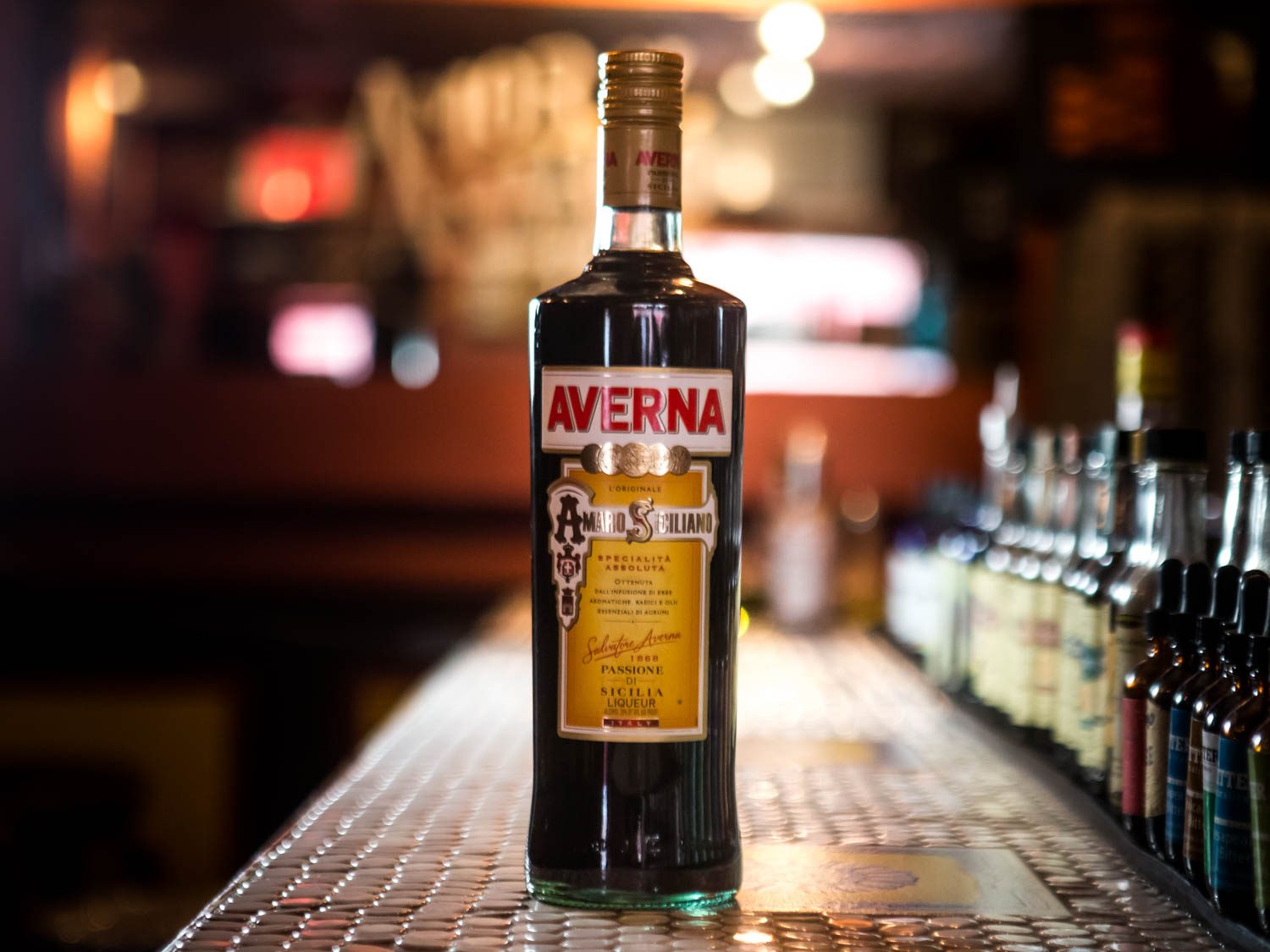
Averna’s slogan is “the full taste of life,” and to that end, the delightfully herbaceous Sicilian tonic offers a deep, rich flavor, caramelly sweetness, and a full-bodied texture. First crafted by the Benedictine monks of Abbazia di Santo Spirito, the recipe was given to a 19th-century merchant named Salvatore Averna, who then left it to his son, Francesco. It’s since been passed down from generation to generation, and has, according to the company, remained relatively unchanged. Many of the ingredients remain undisclosed, but the list includes pomegranate and the oils of bitter orange and lemon, yielding notes of orange and licorice tempered by myrtle, juniper berries, rosemary, and sage. Enjoy it as a digestif or in the Black Manhattan, which swaps sweet vermouth for Averna.
Find Averna online here or get our favorite Averna cocktail recipes right this way»
Aperol
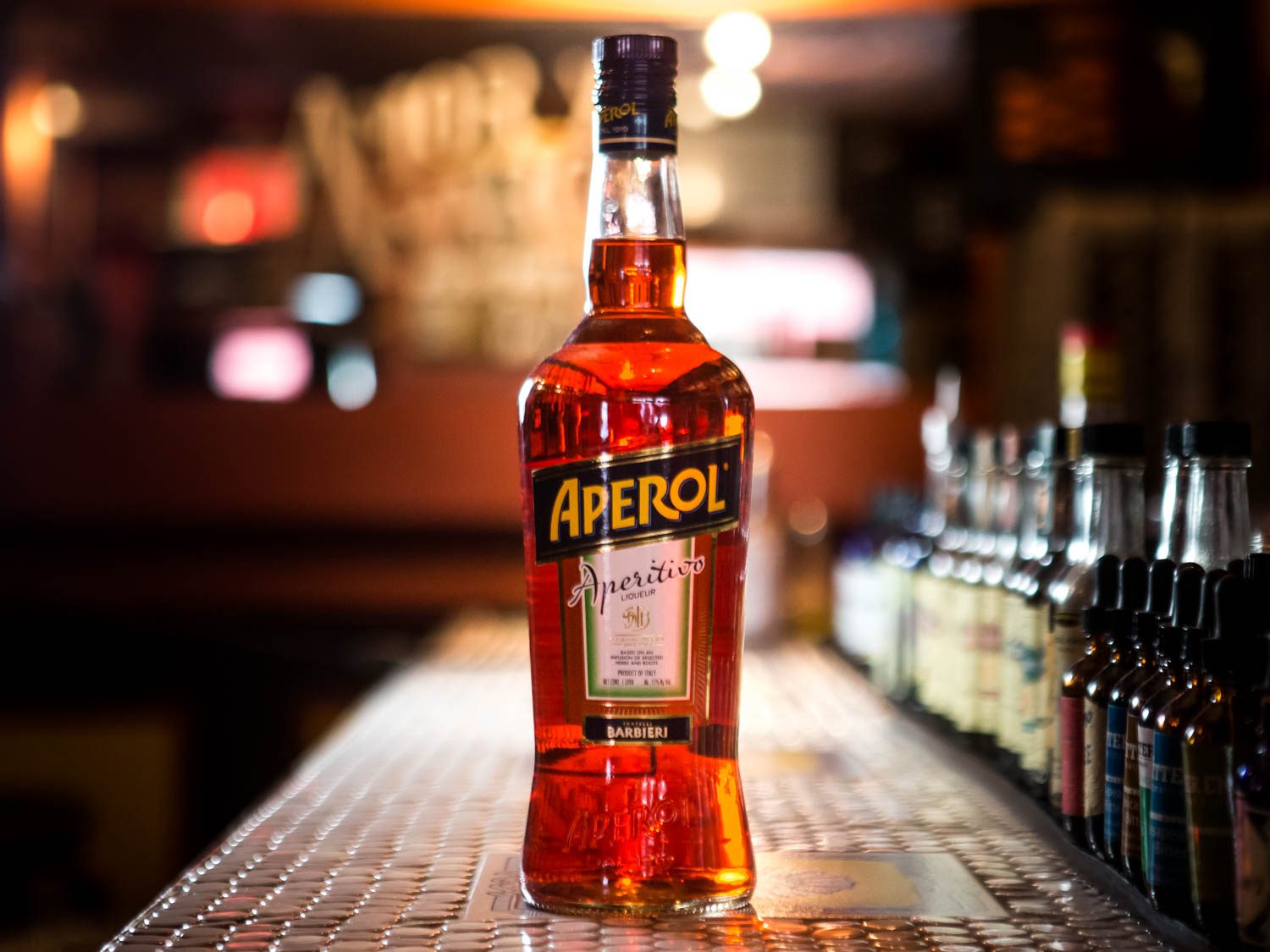
The Aperol Spritz must be one of the most evocative cocktails of all time. The pure essence of summer in a glass, it has a backbone of bright, red-orange Aperol—a mildly bitter concoction of orange, gentian, rhubarb, and cinchona, among other ingredients. First produced in 1919, Aperol gained immense popularity after World War II and can now be found at any cocktail bar worth its salt. With a low 11% alcohol content, mellow flavor, and pleasant woody notes, it’s perfect for session-able cocktailing or sipping with soda.
Find Aperol online here or get our favorite Aperol cocktail recipes right this way»
Braulio
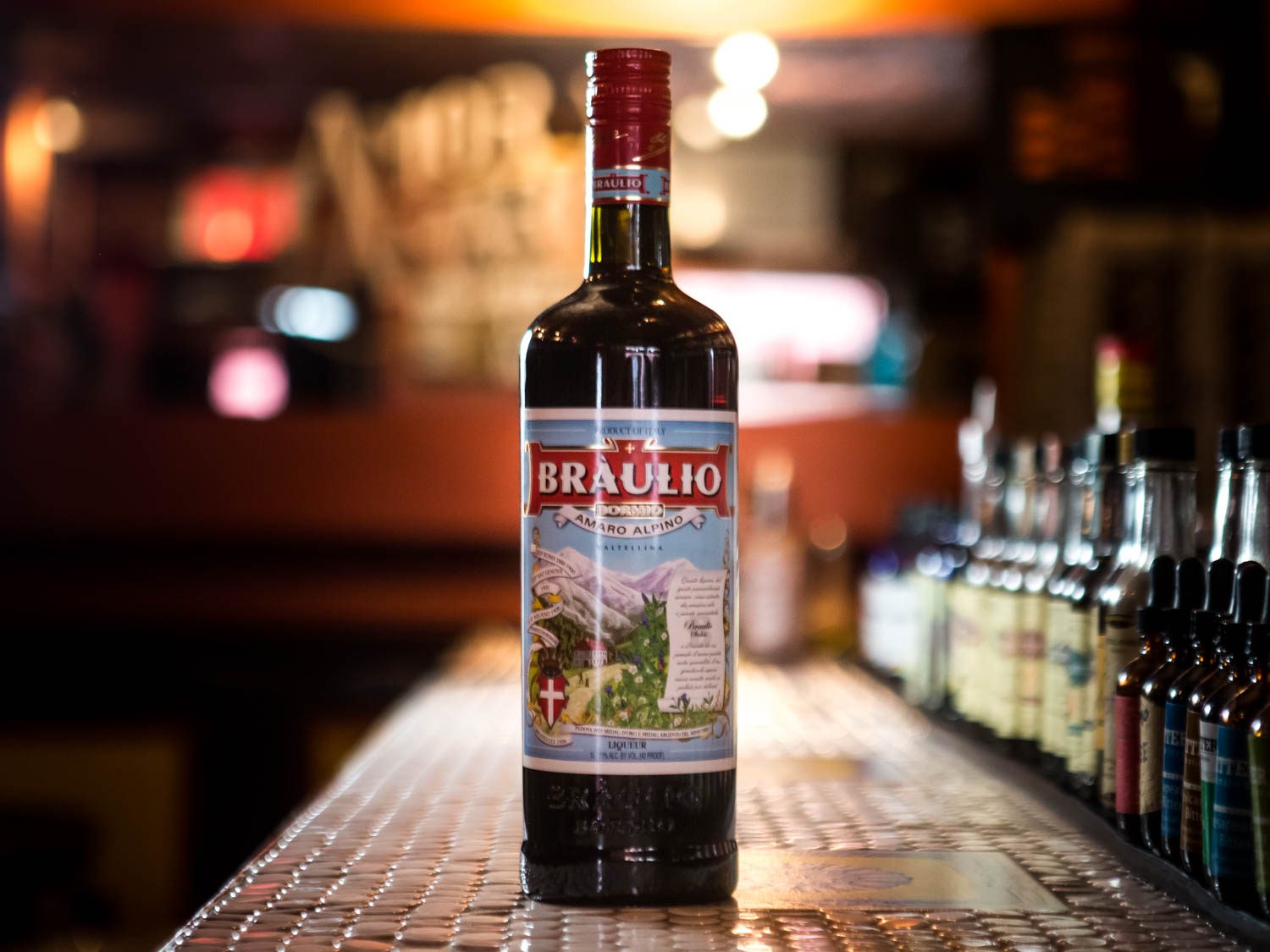
When you take a sip of Braulio, close your eyes and imagine the cool air and crisp, piney scent of the Italian Alps. This storied amaro is produced in Bormio, Valtellina, near the Swiss border, and screams “alpine” with minty, juniper-forward notes. Made by aging 20 aromatic herbs and botanicals in sessile oak barrels, it nods to the history of amari as medicinal potions—the recipe was created in 1875 by chemist Francesco Peloni as a digestive aid.
Find Braulio online here or get our favorite Braulio cocktail recipe right this way»
Campari
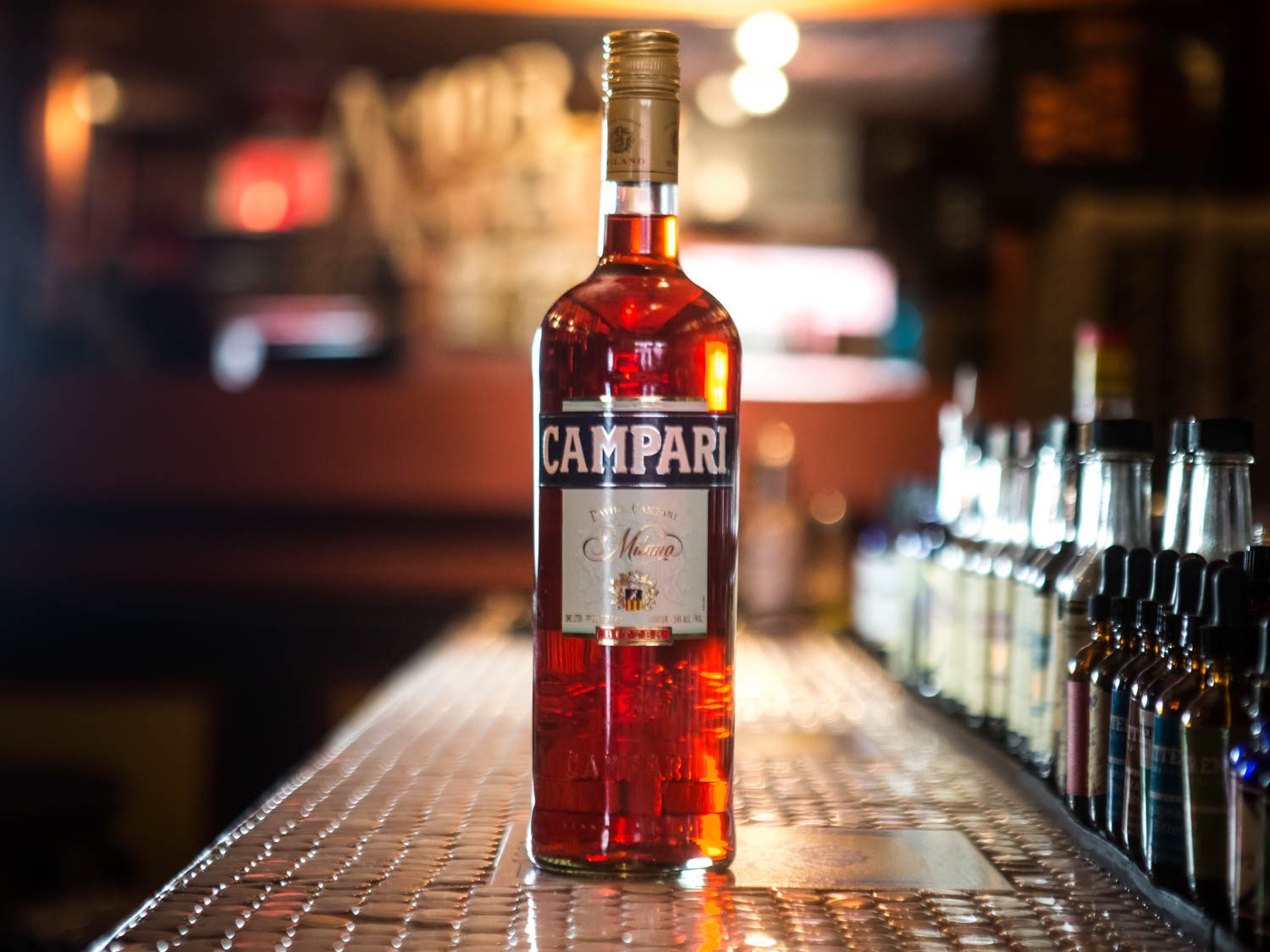
Vibrant-red Campari is perhaps the most famous of the bunch, and an essential for any well-stocked bar. The infusion of bitter herbs, aromatics, and citrus fruits (such as chinotto oranges) may look similar to Aperol, but it packs a higher alcohol content and notes of orange rind and and sweet red fruit. Its harmonoious balance of cinnamon-y spice, herbal bitterness, and fruity sweetness make it a versatile player in traditional recipes like the Negroni and the Americano, as well as modern classics like Giuseppe Gonzalez’s beloved Jungle Bird. Campari hails from northwest Italy, where it was first created in 1860, and in fact, Campari Group now owns half the other bottles on this list.
Find Campari online here or get our favorite Campari cocktail recipes right this way»
Cynar
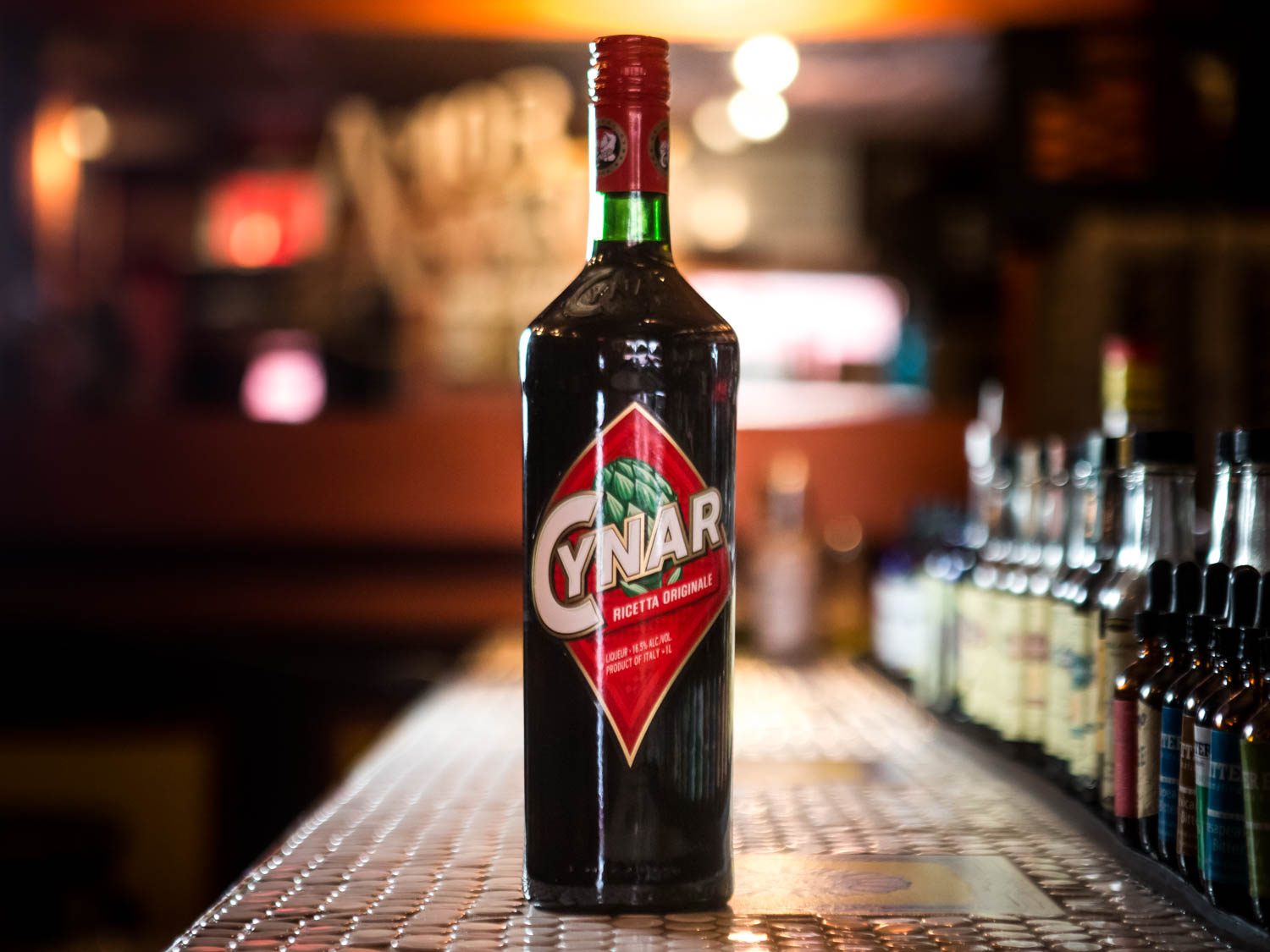
Artichoke might not be the first thing that comes to mind when you’re hankering for a cocktail, but that’s only if you’ve never had Cynar (pronounced “chee-NAHR”). To be fair, the vegetable joins 12 other herbs and plants in creating the beloved dark-brown digestivo, which doesn’t actually taste like artichoke. Known for hitting extremes of both sweet and bitter, it’s perfect on ice with a splash of soda and citrus juice, or subbed for Campari in a Negroni variation. Angelo Dalle Molle, a Venetian businessman, created the original, 33-proof recipe in the 1950s; a 70-proof version was released in 2015.
Find Cynar online here or get our favorite Cynar cocktail recipes right this way»
Amaro CioCiaro
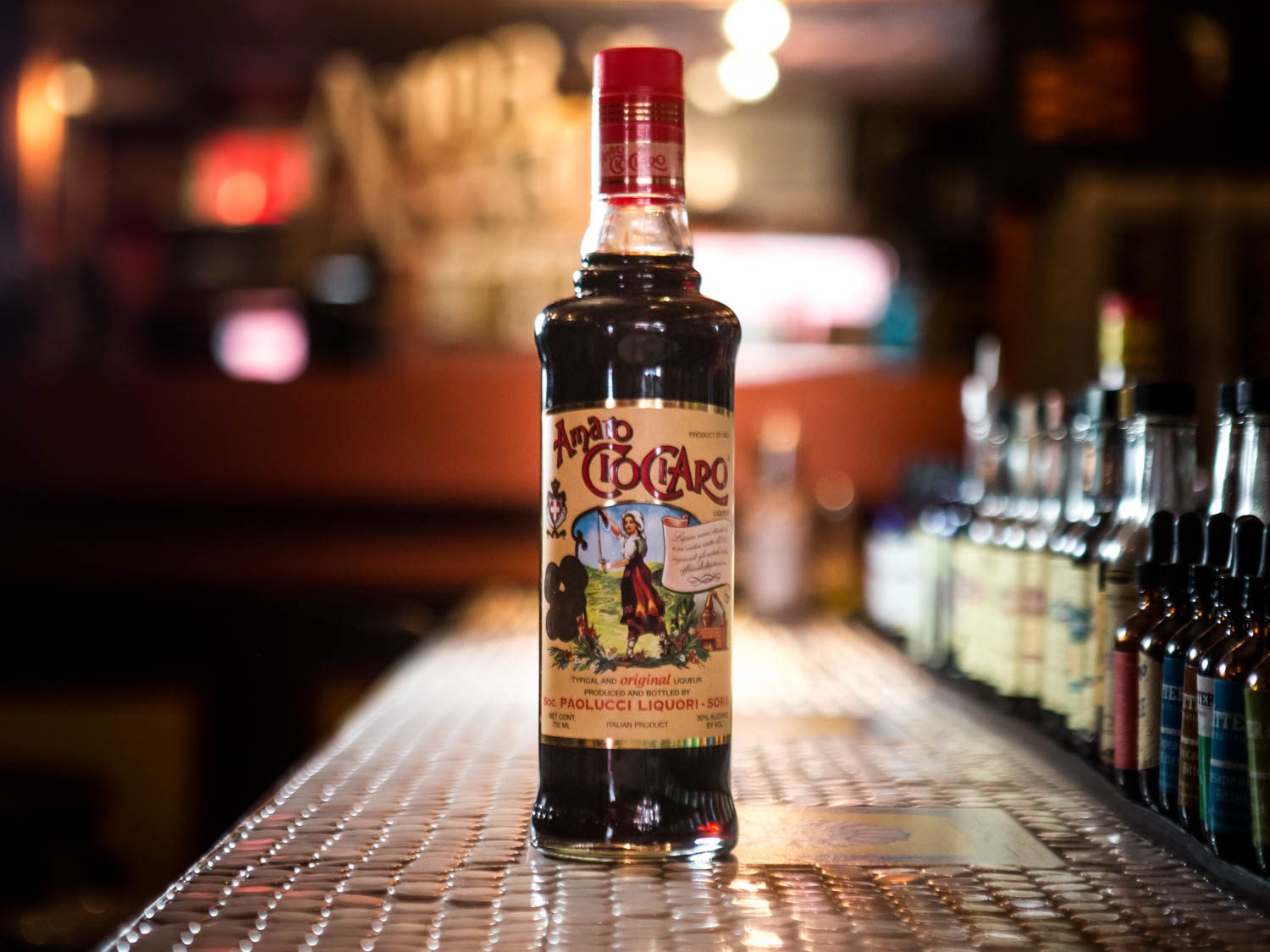
Once you’ve gotten accustomed to the sweeter, lighter amari, CioCiaro is a nice middle-of-the-road next step before taking on some of the more aggressively bitter varieties. With a gentian base, this dark-hued amaro bursts with floral notes and baking spices alongside hints of cola and lemon. Production of this bottle, the brainchild of Vincenzo Paolucci, has stayed in the Paolucci family since 1873. Try it in the Blue Collar cocktail, created at the legendary, now-shuttered Milk & Honey: rye, sweet vermouth, CioCiaro, maraschino liqueur, and Angostura and Regan’s bitters.
Fernet-Branca
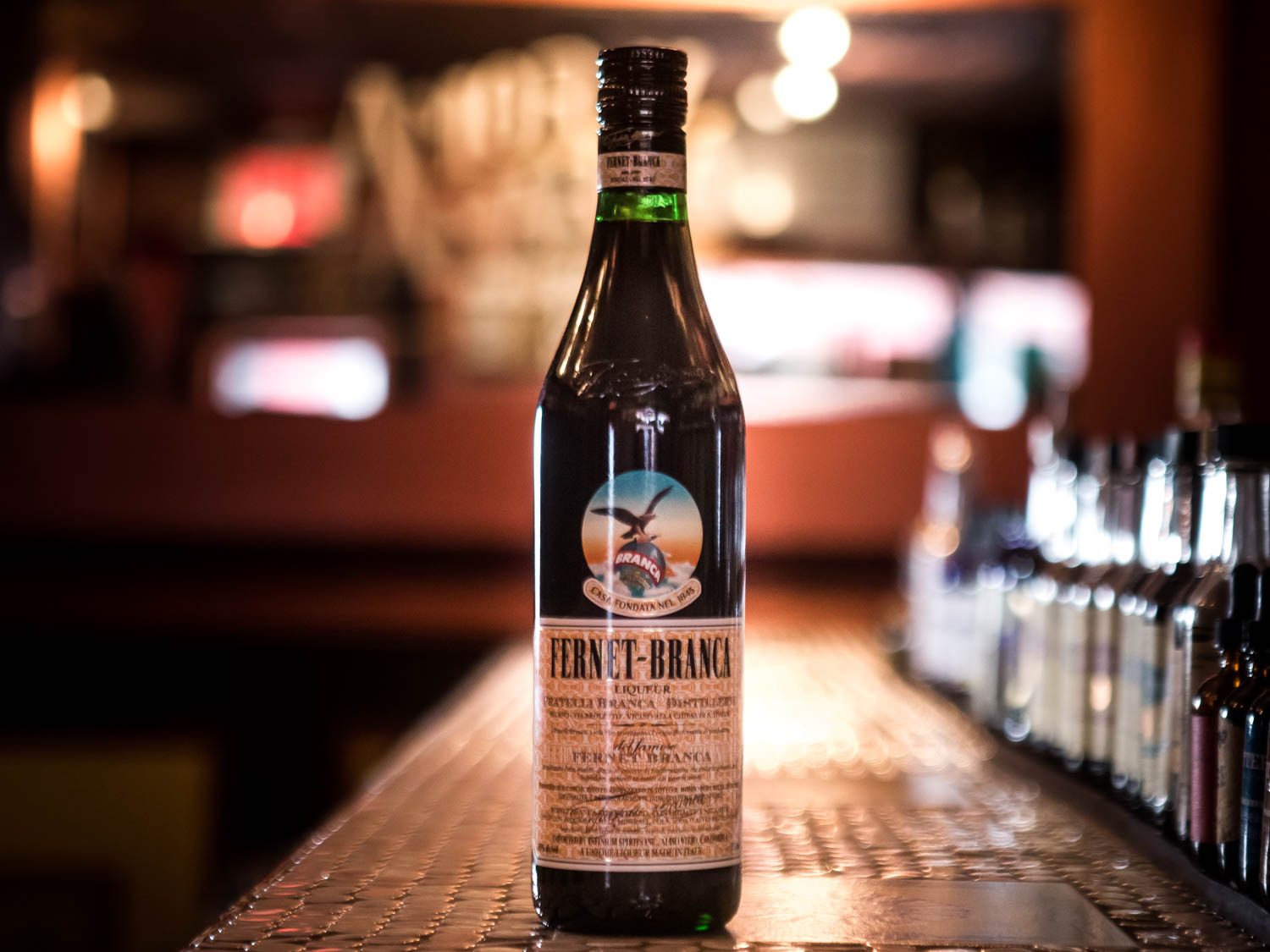
A class of its own within the larger amaro family, Fernet is known as the “bartender’s handshake”—what bartenders order when visiting a comrade who’s working behind the stick. Milan’s Fernet-Branca, founded in 1845 and by far the most well-known producer of the style, is distinguished by its heady zing of black licorice and green herbaceousness from a secret blend of ingredients known to include myrrh, saffron, chamomile, and gentian. Mixing with Fernet can be tricky, as it requires complementary ingredients that aren’t easily overpowered. It’s popularly sipped on ice, with soda, or even Cola.
Find Fernet-Branca online here or get our favorite Fernet cocktail recipes right this way»
Amaro Lucano
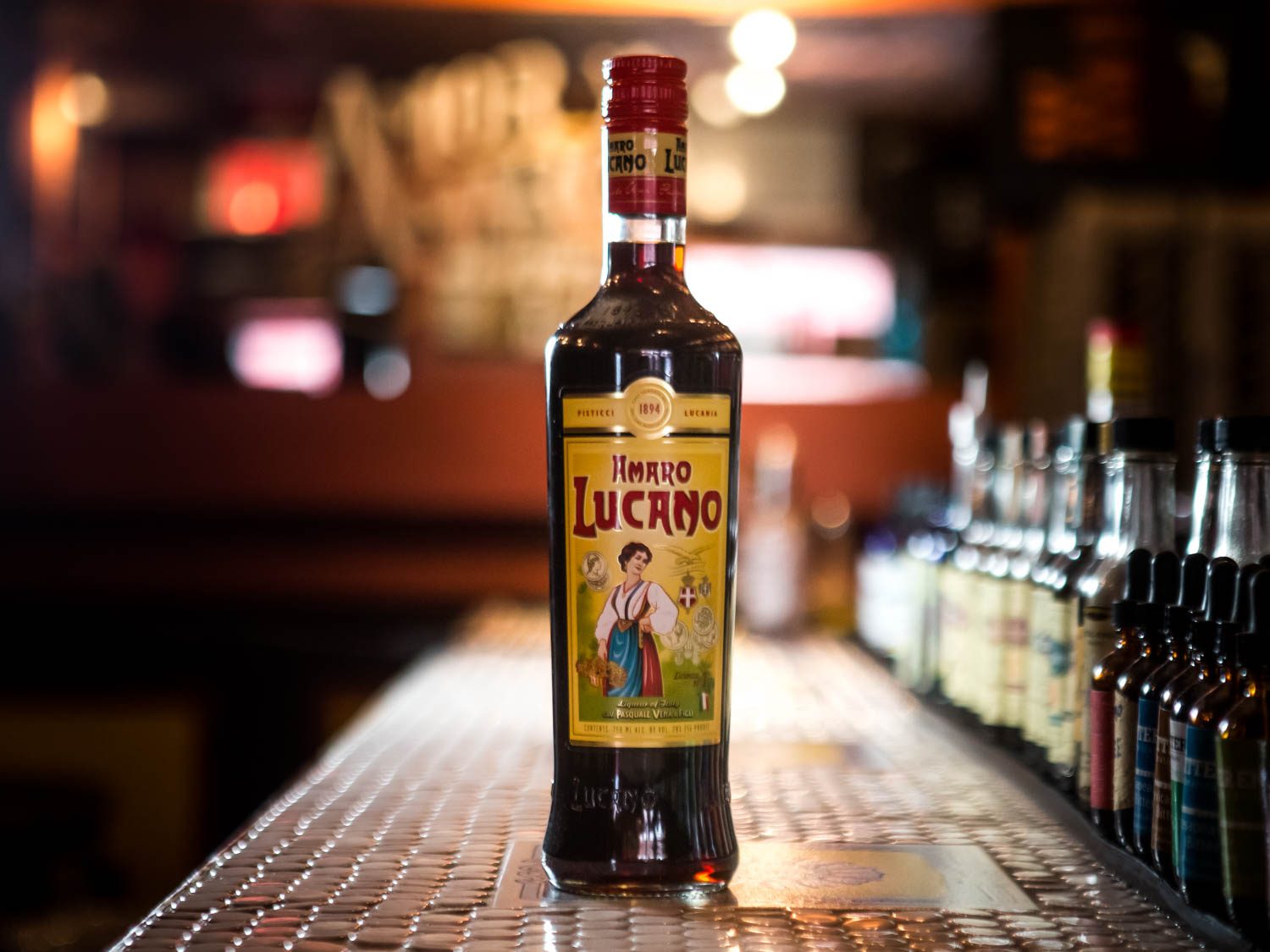
Hailing from the southern Italian town of Pisticci, this dessert amaro is a pleasant sipper before or after a meal. It was created by pastry chef Pasquale Vena in 1894, and the fourth generation of the Vena family still oversees production today. Lucano is made with wormwood, clary sage, and holy thistle, but like most amari, the full recipe is cloaked in secret. The profile blends citrusy and floral notes to achieve an excellent balance in both flavor and mouthfeel. Drink the stuff on ice or splash it with sparkling wine or soda, and you’re set.
Find Amaro Lucano online here or get our favorite Lucano cocktail recipe right this way»
Amaro Montenegro
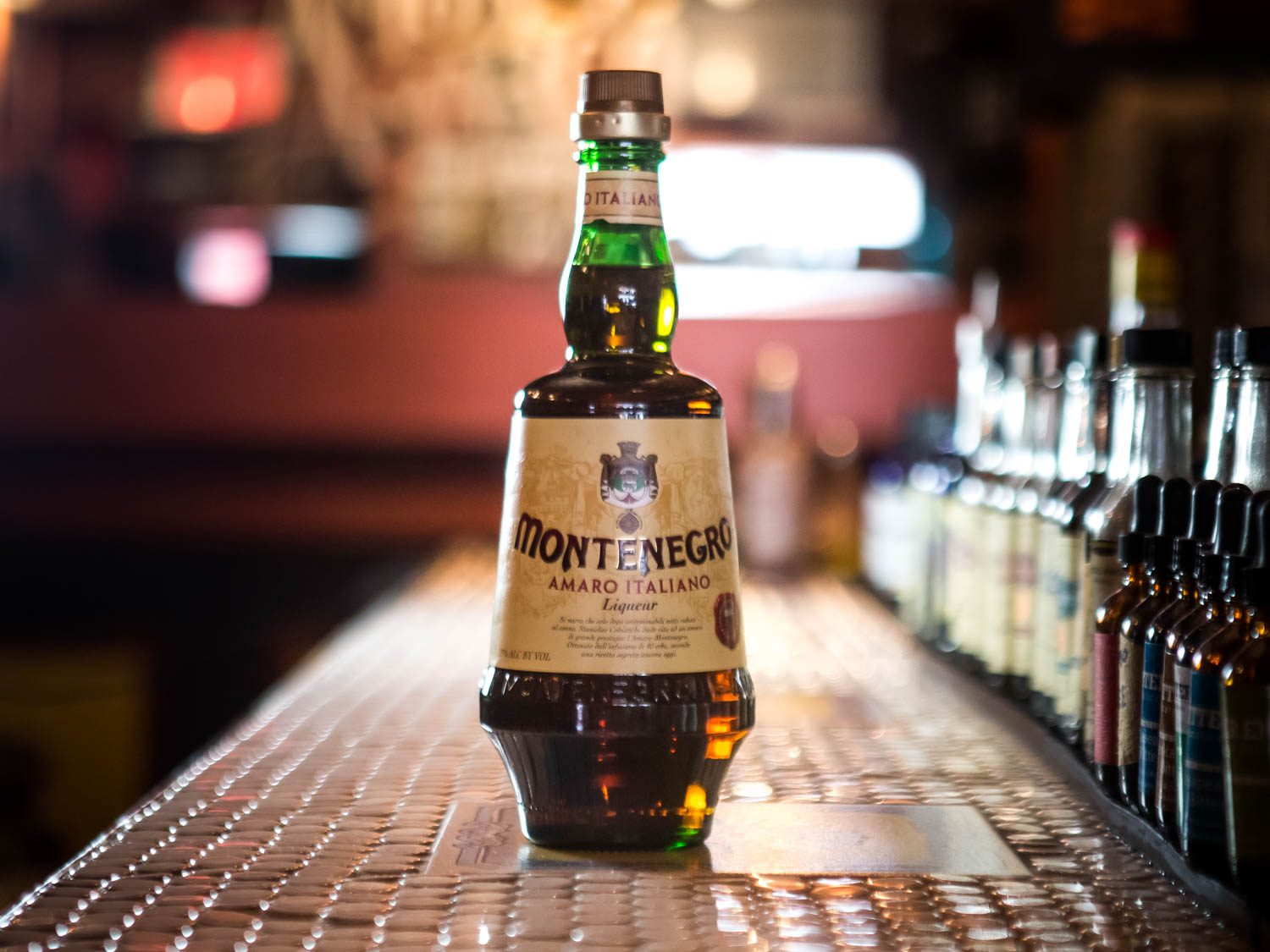
Ah, the gateway amaro: pleasantly sweet, not too bitter, with perfect velvety richness. Teague says he’s never poured a shot of Montenegro that wasn’t well received. A whopping 40 botanicals—sweet and bitter oranges, coriander seeds, marjoram, cloves, and artemisia, among others—come together to produce a wonderfully complex yet approachable sipper that’s at once bitter, herbaceous, fruity, sweet, and fresh. Dubbed the “liqueur of virtues,” it’s the most popular amaro in Italy for good reason.
Find Amaro Montenegro online here or get our favorite Montenegro cocktail recipe right this way»
Amaro Nonino Quintessentia
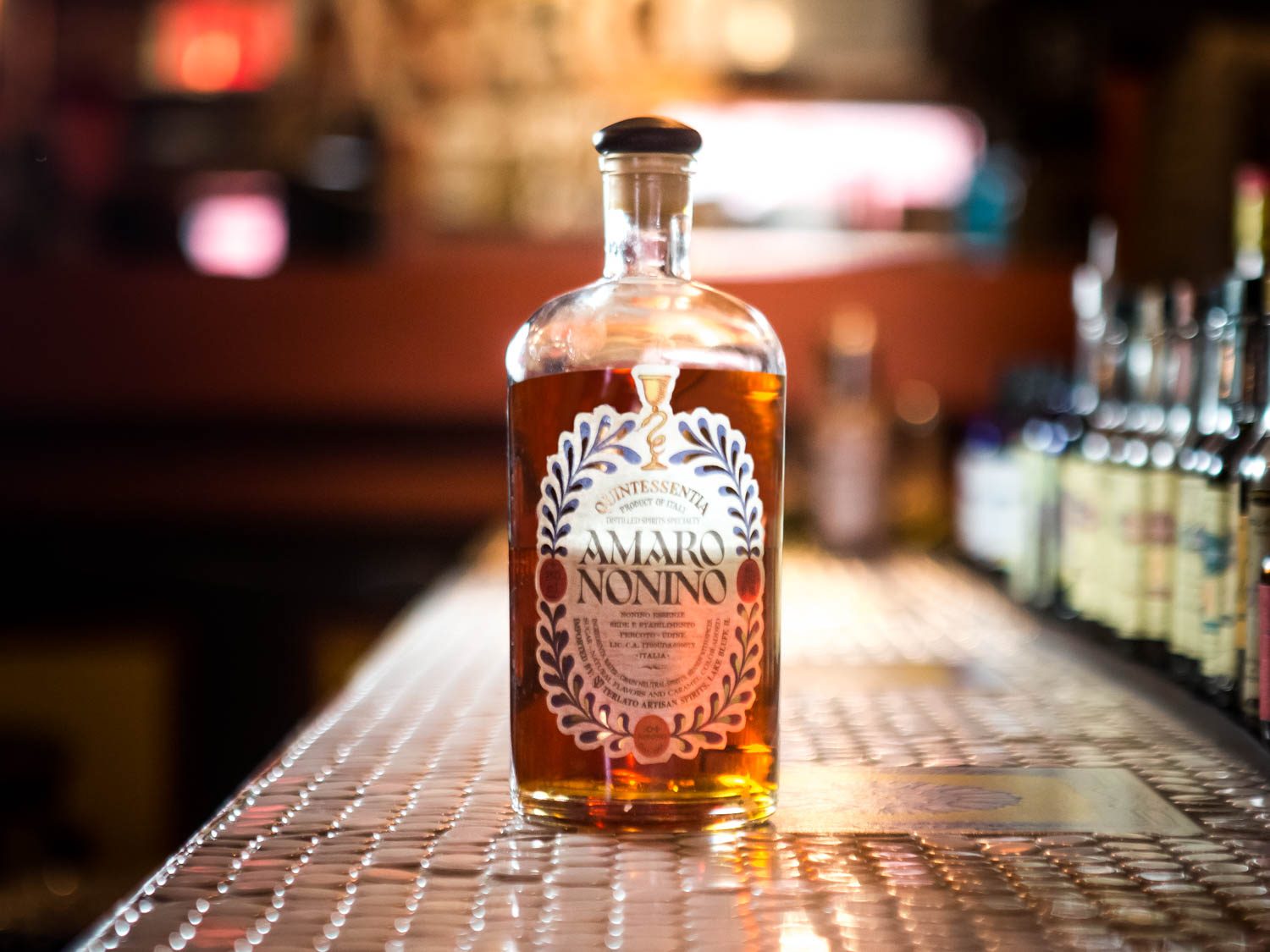
Another alpine amaro, Nonino employs a base distillate of grappa that’s steeped with mountain botanicals—ranging from standard gentian and saffron to licorice, rhubarb, and tamarind—then aged in oak barrels for five years. A bit sweeter and mild on bitterness, the light-red liqueur makes for a nice stand-alone pour and can even be used as a substitute for Cointreau or triple sec. Produced using a family recipe since 1897, Nonino is another great entry-level bottle for newcomers to the style.
Find Amaro Nonino Quintessentia online here »
Ramazzotti
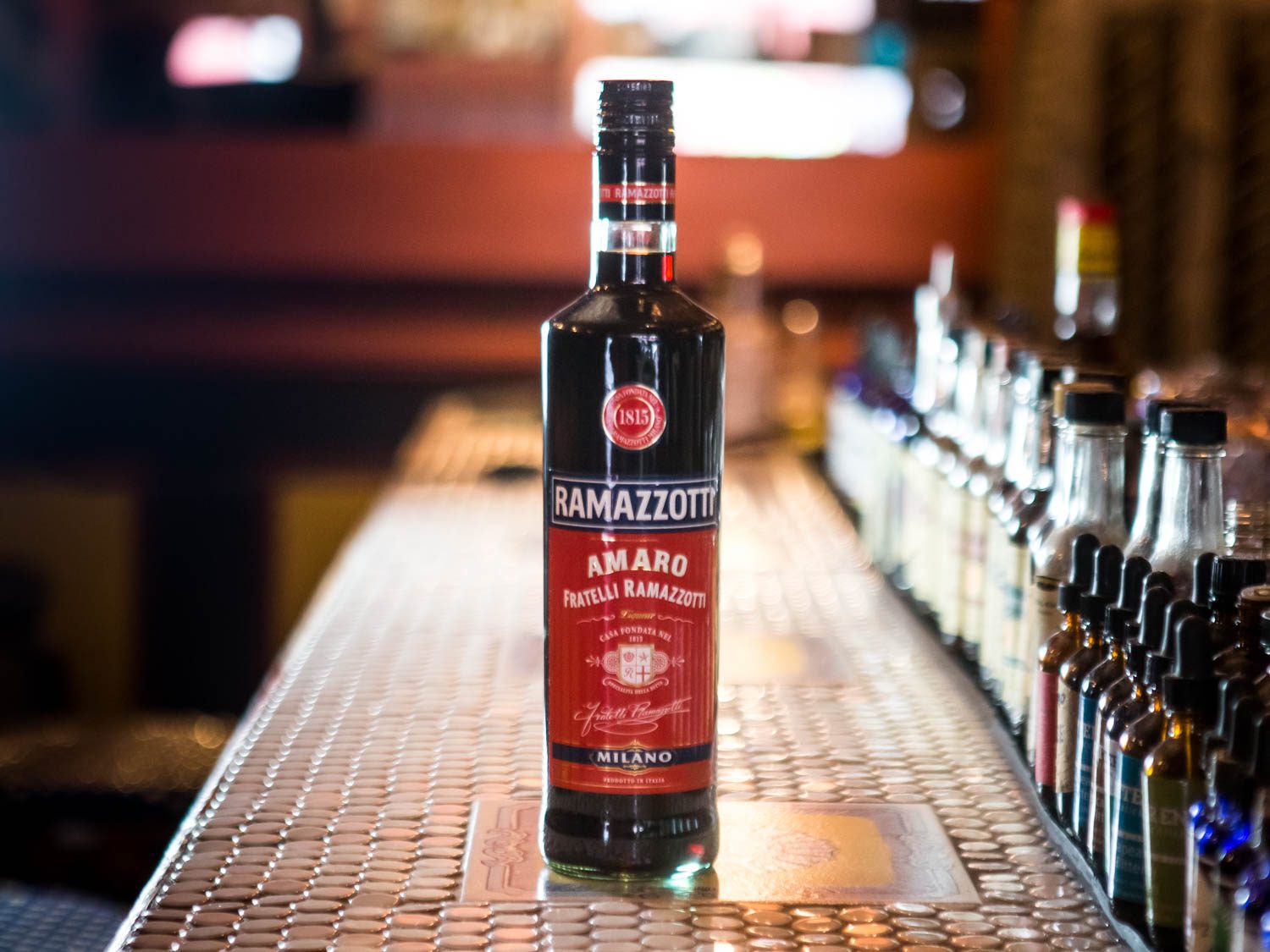
Created by Ausano Ramazzotti in Milan in 1815, this funky, bitter amaro has become fairly popular in the US. Star anise, cinchona, and gentian are a few of the 33 herbs and roots that give this bottling its distinct vanilla root beer–esque quality. More often consumed after than before a meal, Ramazzotti can come across a little strong at first, but it’s easy to love.
Find Ramazzotti online here or get our favorite Ramazzotti cocktail recipes right this way»
Sfumato
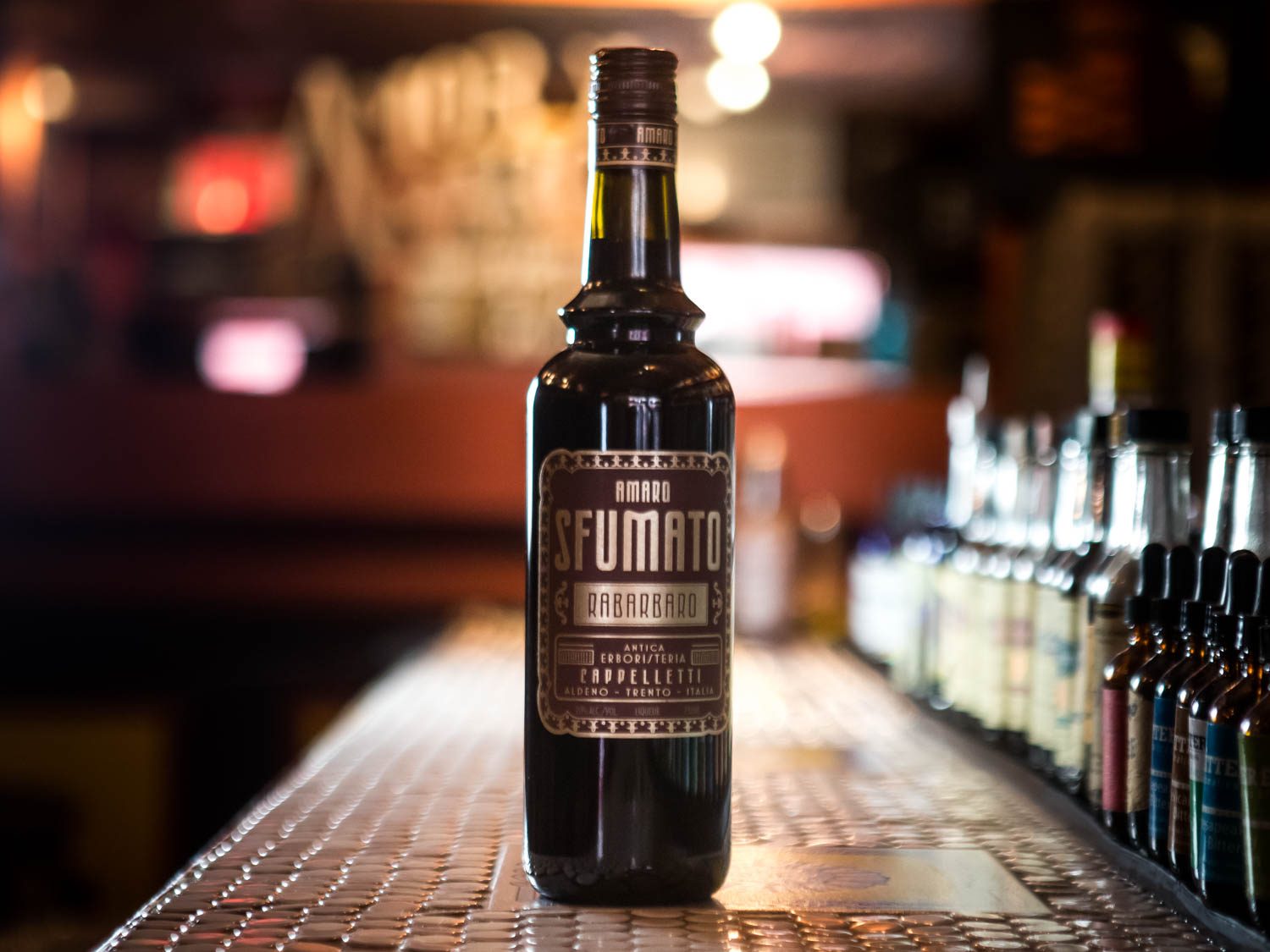
No, Sfumato doesn’t make it into many beginner’s guides to amari. The assertive, bracingly smoky amaro, produced by the renowned Cappelletti family, isn’t so approachable, but it’s gaining traction among bartenders for the significant impact even a small amount can have on a cocktail. An exemplar of the rabarbaro, or rhubarb, style of amaro, it features prominent spice and earth tones thanks to the use of Chinese rhubarb grown near the border of Italy and Austria, complemented by alpine herbs and berries.
Source link